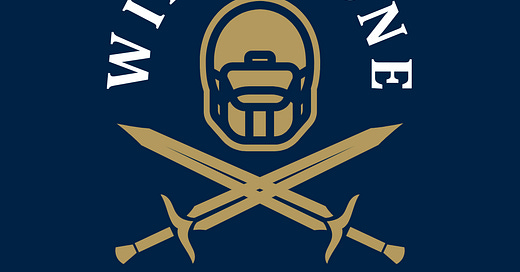Developing a Short Yardage / Goal Line Package
Thoughts on SYGL Offense from the 2023 49ers, Rams, Dolphins, and Packers
Short Yardage / Goal Line (SYGL) situations are potentially the single-largest point swing situations in a football game, yet when it comes to discussing offensive systems, they are often an afterthought. For NFL teams, they are often the difference in 4 points (going from a TD to a FG), but in the high school game, they can just as easily be the difference in 6, 7, or even 8 points with the lack of field goals for most of us. Of course, both of those scenarios assume that the offense even gets into scoring range, which becomes much more difficult if the offense has trouble grinding out 2 yards when necessary along certain parts of a possession.
Personally, I consider Short Yardage situations as 3rd or 4th down and 2 or less yards to go. 2nd & Short is generally considered a “shot play” down as the offense has at least one more opportunity to get the 2 yards required for a new set of downs, so taking a shot at an explosive play doesn’t have the same opportunity cost as it does on other downs & distances. I also consider Goal Line scenarios to be anything inside the 2 yard line, regardless of the down. These two situations are similar, primarily because of the generally high run tendency, and I think it’s important to have parts of the playbook and the play call sheet specifically set aside for this scenario.
Some offenses like the different variations of Bone and Wing offenses have stood the test of time partially due to these situations. One of the main benefits of those offenses is that they are predicated on being able to essentially guarantee 3 yards on any given play. They may or may not be explosive, but 3 yards x 4 downs = 12 yards, 2 more than are needed in a set of downs. It might take a while, but those offenses are eventually going to make it down the field, and even when they get into an SYGL situation, they are able to run their base offense because that’s what it’s made for.
Even the best in the world have packages specifically for SYGL situations. A popular one I see in this tree and others is getting into 13P, attaching all 3 tight ends to the same side of the OL creating a 5 man surface, and having a single WR to the open side. It forces the defense into a massive box, both literally and figuratively. There are many gaps to fill if a defense wants to maintain gap integrity, but due to the yards needed and the personnel on the field, the defense is generally going to want to fill those gaps with run-stuffing defensive linemen, potentially weakening the coverage. It also essentially forces a defense to play 1-on-1 on the WR, which is a difficult problem for any DB, especially with the quality of most teams’ #1 WRs.
Another of my favorite SYGL packages is 23P. The offense gets a 4 man surface to one side, a 3 man surface to the other, and still has the advantages of a 2 back run game. Yes, they lose the likely 1-on-1 with the WR, but there is another gap added to the run fit with the Fullback, and the defense still has to have someone on the outside to both sides of the formation to defend the Flat and, at the very least, provide some deterrent to the offense just calling Crack Toss.
So what are some things to factor into developing a SYGL package?
Paid subscribers will have access to my thoughts on building out a SYGL package and a cutup of every 3rd/4th & <2 play from the 2023 Rams, 49ers, Packers, and Dolphins!
Keep reading with a 7-day free trial
Subscribe to Wide Zone Warriors to keep reading this post and get 7 days of free access to the full post archives.




